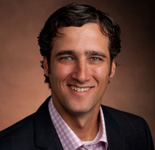Q&A With David Shapiro, VP Of Member Experience For Medicare And Retirement, UnitedHealth Group
There is a staggering amount of customer experience work going on in the healthcare industry these days. From providers (the docs), to pharma companies and payers (health insurers), everyone is trying to figure out what to do and how to do it.
One guy who’s figured out a lot is David Shapiro, who wowed members of Forrester’s Customer Experience Council last year with a presentation of how UnitedHealth Group uses journey maps to transform experiences. David is the vice president of member experience for Medicare and retirement at UnitedHealth, and he's one of the speakers at Forrester's Forum For Customer Experience Professionals East on June 25th and 26th in New York.
In advance of his speech, we put some questions to David about the evolution of customer experience at his organization.

Q. When did your company first begin focusing on customer experience? Why?
Our Medicare members’ experience with their plan has always been important to us because of the way Medicare plans are sold. Unlike commercial insurance, which typically allows employees to choose from a small group of plans that their employer selected for them, Medicare is a true B2C industry. Beneficiaries have the opportunity to select the plan or plans that meet their needs when they first become eligible, and then annually they can switch to a different plan if they choose. These dynamics, combined with the exponential growth in the senior population as baby boomers age, has made for an extremely competitive environment, one in which it’s critically important that your members are pleased not only with their coverage but also with the experience of being enrolled in your plan.
Historically, UnitedHealthcare has maintained a strong focus on providing Medicare plans that are affordable for seniors and that offer benefits that are important to our members. That focus on meeting our members’ expectations has served us well — we’re currently the largest business dedicated to the health and well-being needs of seniors and other beneficiaries, with 9.8 million people enrolled in our Medicare plans. In recent years, we’ve dedicated additional resources to not just meeting members’ expectations but exceeding them. We’re working to provide our members with simple, personal care as well as an experience with our plans that’s seamless and comfortable.
Q. What were the first steps your firm took to improve customer experience? Why did you choose to start that way?
When our CX team was first established, we focused on engaging the organization in the member strategy and putting employees in our members’ shoes so they could develop a deeper, more personal understanding of our members. We did this through a variety of tools such as case studies and analytical tools that help spread the voice of the member across the business, but our Member Journey Map was at the core of our efforts. We created our journey map based on personal interviews with Medicare members in their homes. The interviews focused on the members’ experiences with Medicare and their health plans, revealing the challenges they faced throughout the process of choosing, enrolling in, and managing a Medicare plan.
Our employees use the Member Journey Map to help them gain a better understanding of enrolling in and using a Medicare plan from the consumer’s perspective. It helps employees develop more personalized solutions to members’ needs and concerns, thereby creating a better member experience. The journey map is one of the tools we rely on to translate complex data into useful information and humanize that information so the voice of the customer is brought to life for employees, stirring emotion, reaction, and ultimately action. The tool and our other CX efforts have enabled us to better align our programs, products, and services with consumers’ healthcare needs.
Q. Who are some of the people involved in these efforts?
As the leader of our CX team, I also recognized early on that I couldn’t achieve my team’s objectives without the support and cooperation of nearly every functional area across the business. So I spent a great deal of time meeting with leaders and managers to explain what we were trying to achieve and the role they and their teams could play in helping us reach our desired end state. During these conversations, I focused not just on my own objectives but also on how enhanced member experience could help many other teams achieve their goals as well.
For example, members who are satisfied with their coverage and the customer service they’re receiving are more likely to be engaged in their care, which could ultimately lead to better health outcomes and reduced costs for the entire Medicare system. Throughout the past several years, I’ve helped my colleagues see how improving the member experience is critical to many of our most important business objectives and have recruited many believers and advocates for the work my team is doing. Collaboration, persuasion, and evangelism have been critical to our efforts so far.
Q. What advice would you give to a company trying to plan its own path to CX maturity?
Employee engagement is at the heart of any CX strategy. At UnitedHealthcare, we’ve embedded the voice of our customers in our culture and have engaged our employees to listen to and understand our members on a personal level. Building this level of employee engagement first requires leadership support of the CX agenda. Once there is commitment and cultural buy-in, it’s about creating tools and processes to enable employees to have ownership and accountability within their role for improving the overall experience. CX is everyone’s responsibility across an organization, and therefore it must be encouraged and supported through processes and tools at all levels in the organization.
Hear more from David at Forrester’s Forum For Customer Experience Professionals East, June 25th to 26th in New York.
